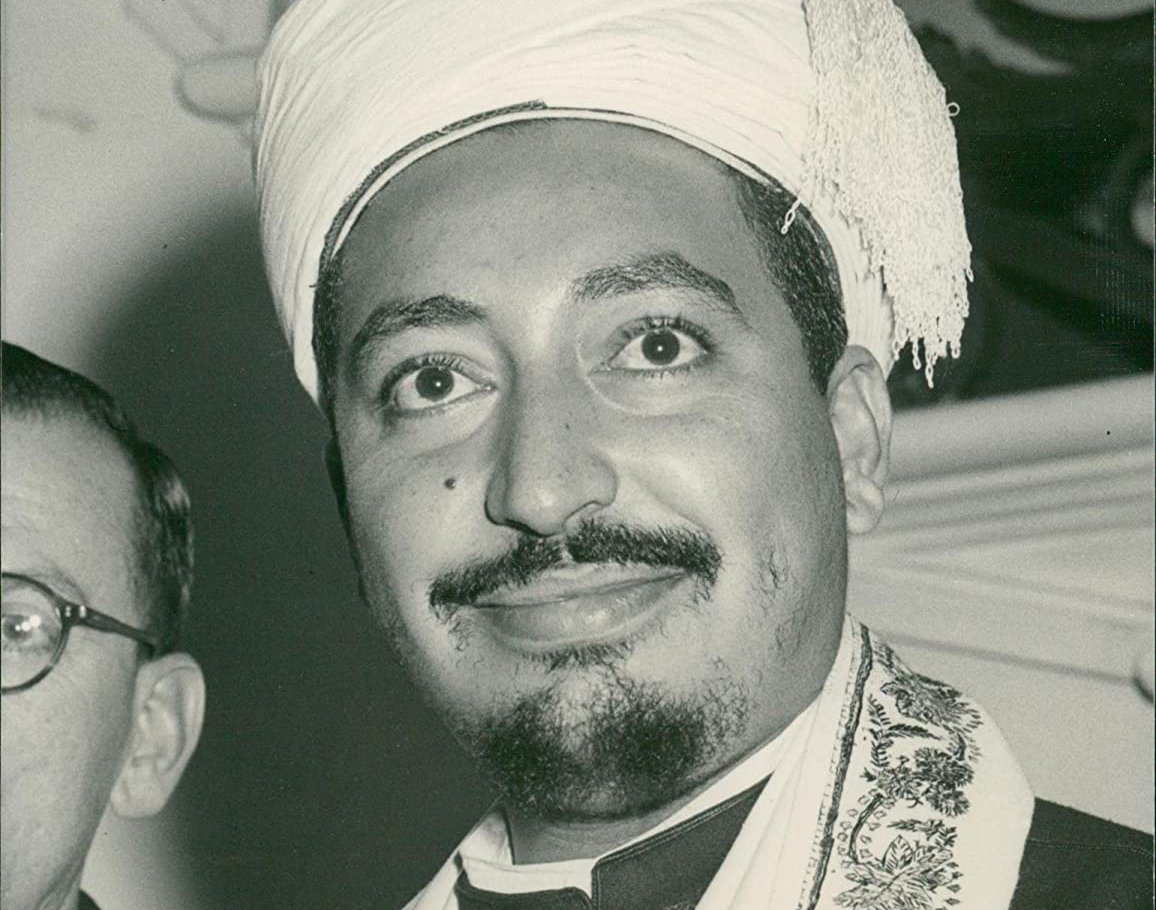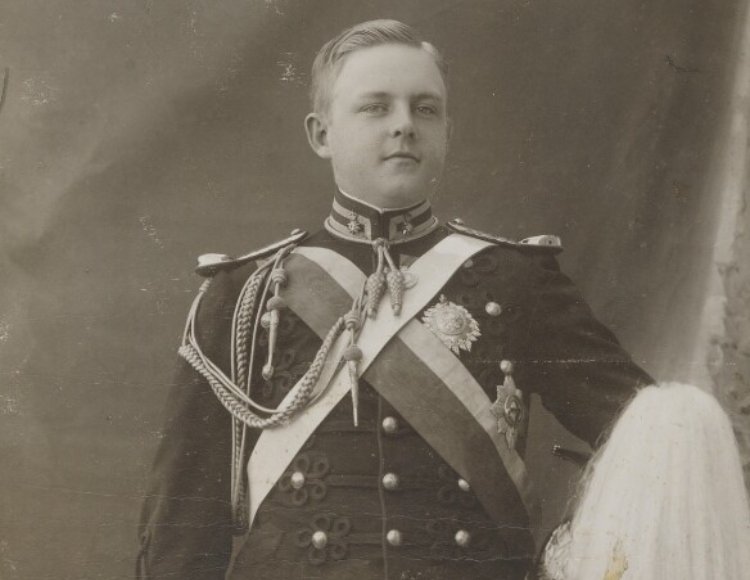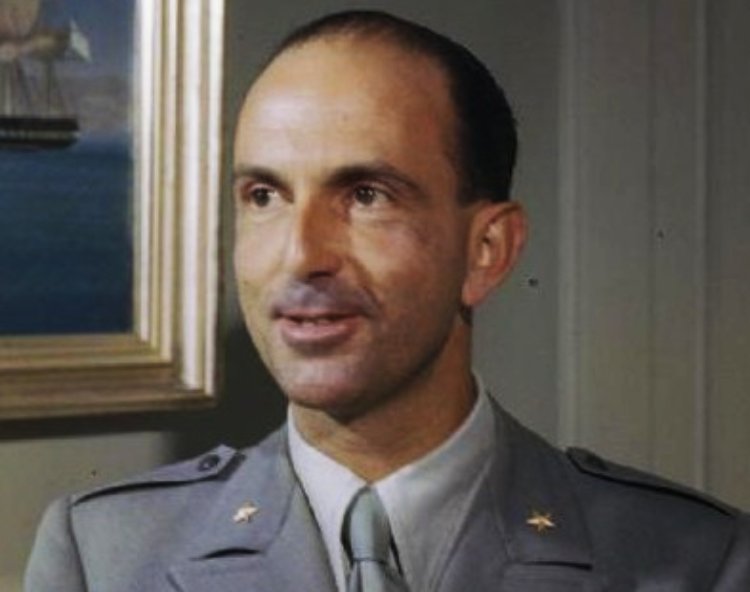The Shortest-Reigning Monarchs In History
You're likely familiar with Queen Elizabeth II's reign as the longest-reigning monarch in British history, sitting on the throne for an incredible 70 years. But what about the other English queen who ruled for just nine days? Let's examine some of the shortest-reigning monarchs in history. Blink and you'll have missed their all-too-short reigns as heads of state.

Ibrahim Pasha
During the Ottoman Empire, their governors of Egypt, over which they ruled, were called "Walis". One such Wali was Ibrahim Pasha, who succeeded his father Muhammad Ali, after the latter was declared senile and incapable of ruling. On his way to Constantinople to be confirmed into office as Wali, Ibrahim Pasha died of exhaustion.
 Charles-Philippe Larivière, Wikimedia Commons
Charles-Philippe Larivière, Wikimedia Commons
Pupienus
Pupienes was one of Rome's emperors in the "Year of Six Emperors", in 238 AD. He and another emperor were declared co-emperors by the Roman Senate in a revolt against leader Maximinus Thrax, following the earlier deaths of two more co-emperors who will appear later in our list. Pupienus' reign lasted 99 days—he was slain by the Praetorian Guard in July 238 AD.
 Benzekre, CC BY-SA 4.0, Wikimedia Commons
Benzekre, CC BY-SA 4.0, Wikimedia Commons
Balbinus
Balbinus enjoyed 99 days as co-emperor alongside Pupienus of Rome, but he was also assassinated by the Praetorian Guard on the same day as Pupienus. Ironically, the grandson of Gordian I, whose death started this mess, became emperor as Gordian III.
 George Shuklin, CC BY-SA 3.0, Wikimedia Commons
George Shuklin, CC BY-SA 3.0, Wikimedia Commons
Umberto II
After his father, Victor Emmanuel III abdicated on May 9, 1946, Umberto II took control of Italy's monarchy. His reign would last only 34 days, after the Italians decided that they'd rather abolish the monarchy than go through more forms of absolutist government.
Napoleon Bonaparte
While we all know that Napoleon Bonaparte's rule over France in the 19th century was anything but short, his tenure as the King of Spain was. He began his reign on May 6, 1808 after the forced abdications of Charles IV and Ferdinand VII of Spain, who Napoleon had defeated. Napoleon's Spanish crown was assigned to his brother Joseph after just 31 days, ending Napoleon's Spanish kingdom on June 6, 1808.
 Jacques-Louis David, Wikimedia Commons
Jacques-Louis David, Wikimedia Commons
Taichang
Taichang was the Emperor of The Ming Dynasty during its reign over China in 1620. Assuming the throne after the demise of his father, Taichang's reign over China lasted just 29 days.
 Unknown author, Wikimedia Commons
Unknown author, Wikimedia Commons
Liu He
Going all the way back to 74 BC, you'll find the curious case of Liu He. He was a Chinese Emperor installed by Huo Guang, a Chinese regent and protector of the Western Han dynasty... only to be deposed by the very same person 27 days later—leaving it a bit late for a "return due to buyer's remorse", but there you have it.
 Gisling, CC BY-SA 3.0, Wikimedia Commons
Gisling, CC BY-SA 3.0, Wikimedia Commons
Constantine I
When Alexander I of Russia perished on November 30, 1825, his brother Constantine must have been sweating buckets. He was next in line to the Russian throne and assumed the title of Emperor—but there was just one small problem: he had secretly abdicated all rights to the throne in 1823 to marry a Polish princess. He gave up the throne to his younger brother after 24 days.
 George Dawe, Wikimedia Commons
George Dawe, Wikimedia Commons

Sign up to our newsletter.
History’s most fascinating stories and darkest secrets, delivered to your inbox daily. Making distraction rewarding since 2017.
Gordian I
It's not often that a father-son duo take over an empire together. But, that's what happened in the "Year Of Six Emperors" in Ancient Rome, in March of 238 AD. Gordian I and II were declared co-emperors in a rebellion against then-Emperor Maximinus Thrax. Gordian I was killed at the Battle of Carthage in April of 238 AD.
 Capitoline Museums, Wikimedia Commons
Capitoline Museums, Wikimedia Commons
Gordian II
Gordian I's father, Gordian II died immediately upon learning of his son's demise at the Battle of Carthage. Since both Gordian I and II perished on the same day in 238 AD, each reigned for just 22 days.
 Classical Numismatic Group, CC BY-SA 3.0Wikimedia Commons
Classical Numismatic Group, CC BY-SA 3.0Wikimedia Commons
Napoleon II
Napoleon II ascended to the throne on June 22, 1815, following the abdication of his father, Napoleon I. He reigned until July 7, 1815—just 16 days, after which the French Imperial State was abolished and replaced by the Monarchy of France.
 Leopold Bucher, Wikimedia Commons
Leopold Bucher, Wikimedia Commons
Eleanor Of Navarre
Queen Eleanor of Navarre came to the throne following her father, John II of Aragon's death on January 28, 1479. She ruled Navarre for only two weeks, dying on February 12th.
 Unknown author, Wikimedia Commons
Unknown author, Wikimedia Commons
Louis II
King Louis II was the King of Holland in 1810, coming to the throne after his father, Louis I, abdicated the throne and fled Holland on July 1, 1810. After only 13 days, the Kingdom of Holland was annexed by Napoleon Bonaparte in a bloodless coup that saw Louis II usurped.
 Thesupermat, CC BY-SA 3.0, Wikimedia Commons
Thesupermat, CC BY-SA 3.0, Wikimedia Commons
Urban VII
Pope Urban VII was the shortest-reigning pope recognized by the Holy See. He became Pope upon the death of Sixtus V and succumbed to malaria just 12 days later. Reigning from September 15 to September 27, 1590.
 Jacopino del Conte, Wikimedia Commons
Jacopino del Conte, Wikimedia Commons
King Henry II
Taking power in Haiti on October 8, 1820 after the death of Henry I, King Henry II met a poor end—he was murdered before being proclaimed King on October 18th, amid a furious civil war in Haiti and the overthrow of the monarchy. His demise marked the formation of the Republic of Haiti.
 Richard Evans, Wikimedia Commons
Richard Evans, Wikimedia Commons
Lady Jane Grey
One of the shortest reigns ever on the British throne was Lady Jane Grey. At the will of her cousin, Edward VI—son of Henry VIII and Jane Seymour—Lady Jane Grey was proclaimed Queen by Edward before his death. Edward's sister, Mary Queen of Scots, deposed Lady Jane Grey and had her executed after just nine days on the throne.
Saad Of Kuwait
Another nine-day reign was Saad, Emir of Kuwait, who took over from Jaber III, following his demise in 2006. Ruling Kuwait from January 15 to 24, 2006, Emir Saad was deposed by the National Assembly on the grounds of poor health—he had previously attended the funeral of Jaber III in a wheelchair.
 Md. Lutfar Rahman Binu, CC BY-SA 4.0, Wikimedia Commons
Md. Lutfar Rahman Binu, CC BY-SA 4.0, Wikimedia Commons
Muhammad Al-Badr
Muhammad Al-Badr of Yemen bested his Mid-East ruling compatriot by one day—ruling as the King of Yemen for just eight days from September 19 to 26, 1962, following the passing of his father, Ahmad Bin Yahya. On September 26th, the Yemeni monarchy was abolished and civil war would begin in North Yemen shortly thereafter.
 Unknown author, Wikimedia Commons
Unknown author, Wikimedia Commons
A Widow's Wrath In Myanmar
In 1330, Zein Pun became King of Myanmar by assassinating his once-mentor, King Saw Zein, of the Martaban Kingdom in modern-day Myanmar. Just a week later, Zein Pun was assassinated himself by Sanda Min Hla, the widow of Saw Zein.
 Johnston, Harry Hamilton, Wikimedia Commons
Johnston, Harry Hamilton, Wikimedia Commons
Henry V
Henry V of France's reign was short and confusing. Following the July Revolution of 1830 which saw the French Bourbon monarchy—led by Henry's grandfather, Charles X, and uncle, Louis XIX—Henry V was proclaimed King in on the turbulent day of August 2, 1830. His reign lasted for seven days, as his proclamation was interrupted by Louis Philippe of Orleans, who didn't announce the King as expected. Then, the National Assembly proclaimed Louis Philippe the "King Of The French" and Henry was marched off into exile. Mon Dieu.
 Étienne Neurdein, Wikimedia Commons
Étienne Neurdein, Wikimedia Commons
Hindering Mahinda VI
Mahinda VI was another Polonnaruwan King who was not long for this world once he took power. After killing Vijayabahu II in 1187, he was slain by Vijayabahu II's sub-King—after just five days in power.
 Sujeewa de Silva, CC BY-SA 3.0, Wikimedia Commons
Sujeewa de Silva, CC BY-SA 3.0, Wikimedia Commons
John II Of Portugal
John II of Portugal was King of Portugal from November 11, 1477 till November 15, 1477. John II's father (John I) had abdicated the throne to his son and retreated to a monastery—but apparently had a change of heart after four days and returned to retake the throne, which John II gladly gave back. He would become King of Portugal for a second spell that wasn't a dry run in 1481.
 Unknown author, Wikimedia Commons
Unknown author, Wikimedia Commons
Lê Quang Tri
This Vietnamese emperor from 1516 was only eight years old when he took control of Vietnam. He was dead three days later.
Dipendra I
Dipendra, King of Nepal, became king in the immediate aftermath of the Nepalese royal family massacre of 2001—wherein nine members of the royal family were slain. Dipendra I was clinging to life when proclaimed King from his hospital bed, in a comatose state. He perished three days later, on June 4, 2001.
 Nabin K. Sapkota, CC BY-SA 4.0, Wikimedia Commons
Nabin K. Sapkota, CC BY-SA 4.0, Wikimedia Commons
Xiaoming's Daughter
The Emperor of Northern Wei (otherwise known as Empress Yuan) was an Emperor/Empress in Ancient China. Soon after her birth, the baby's grandmother, Empress Dowager Hu, passed the girl off as a male. She was thus declared Emperor of Northern Wei—but the grandmother's ruse lasted less than a day, after she finally admitted that Empress Yuan was a woman and thus ineligible to rule.
 Underbar dk, CC BY-SA 4.0, Wikimedia Commons
Underbar dk, CC BY-SA 4.0, Wikimedia Commons
Khalid Bin Bargash
The Sultan of Zanzibar was installed to the position of sultan in peculiar circumstances—reportedly after poisoning his own cousin to get the job. Khalid Bin Bargash's installation as Sultan led to the shortest war in recorded history. Great Britain—at the time sympathetic to the previous sultan and backed up by Zanzibar "law" that stipulated that a new Sultan should be appointed with the consultation of the British—engaged in a 45-minute war with Khalid, mostly by destroying his palace with artillery fire. Khalid abdicated two days later.
 Bundesarchiv, CC-BY-SA 3.0, Wikimedia Commons
Bundesarchiv, CC-BY-SA 3.0, Wikimedia Commons
Luis II Of Portugal
The Portuguese make short work of their kings, don't they? Luis II of Portugal survived the successful assassination of his father, Carlos I, on February 1, 1908 in Lisbon. The trouble was that King Luis II's wounds were fatal and he perished 20 minutes later, making him the second-shortest reigning monarch in history.
 Unknown author, Wikimedia Commons
Unknown author, Wikimedia Commons
The Sri Lankan King Who Assassinated His Own Son
In one of the most shockingly short-lived stints on a throne, Anikanga became King of Polonnaruwa, a kingdom now known as Sri Lanka, in 1209. To become king, he horrifically murdered his own infant son and effectively stole his crown. Regicide and infanticide all rolled into one. Anikanga met his comeuppance only 17 days later, though, as a top general, Vikkantacamunakka, murdered him, then handed over control of Polonnaruwa to Queen Lilavati, Anikanga's former wife.














